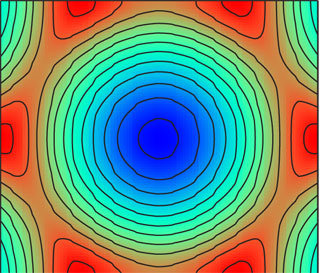University of Iowa researcher Michael Flatté has received a five-year, $958,000 contract from a newly funded research center at the University of Minnesota to study new materials for faster, more secure and more energy-efficient computers and other devices.
The Center for Spintronic Materials, Interfaces and New Architectures (C-SPIN) is part of a larger five-year, $194 million program of support for microelectronics research made to a total of six university-lead research centers by the Defense Advanced Research Projects Agency (DARPA) and the Semiconductor Research Corporation (SRC).
Flatté, professor of physics and astronomy in the College of Liberal Arts and Sciences (CLAS) and director of the UI Optical Science and Technology Center, says the new project continues his ongoing work in quantum technology. Quantum technology is an interdisciplinary field using physics, materials science, and engineering to manipulate individual basic units of energy and matter called quanta.
Flatté, who also serves as professor in the UI College of Engineering’s Department of Electrical and Computer Engineering, says that the project will build upon and advance his established UI research strengths.

"My spintronics research has focused on theories of the fundamental magnetic properties of materials and the behavior of electric currents within them, as well as how to use these materials to construct nanoscale electronic circuits that require considerably less power to function," he says.
Flatté notes that as part of his research, the magnetic interaction between two individual atoms within a semiconductor chip was predicted and later confirmed by experimental work elsewhere.
This new contract for fundamental research supports his efforts to understand the internal dynamics of a magnet, and how magnetic waves within that magnet can be used to carry information quickly and efficiently around a computer chip.
“If successful this work could be used by semiconductor electronics companies to design high-speed, low-power electronics for computers, cell-phones, and any other device whose performance is limited by battery storage," Flatté says.
For more information on C-SPIN, see cspin.umn.edu/.